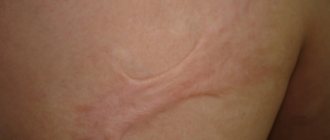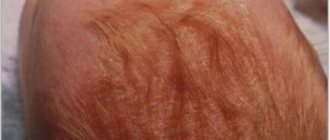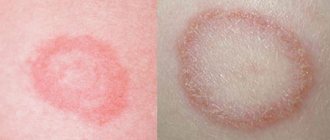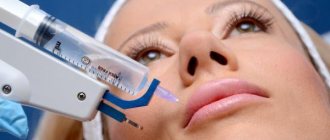If bubbles appear on your child's tongue , do not try to get rid of them yourself. Surely there were reasons for their occurrence, and only a specialist can accurately determine them. First, the doctor must find out what exactly triggered the formation of painful blisters on the child’s tongue. The reasons vary. Most often, white blisters appear due to a fungal infection or thrush. Also, their occurrence could be detected by severe dysbiosis or as an allergy. It should be noted that most allergic reactions manifest themselves in the form of urticaria, diathesis or dermatitis.
Causes of bubbles on a child’s tongue
In order to help the child as quickly as possible and prescribe appropriate treatment, it is necessary to determine the causes of the formation of bubbles on the child’s tongue. The very first reason why the mucous surface of a child’s tongue becomes covered with pimples is thrush. Often, this disease affects young children whose immunity is severely weakened. Small white bubbles form not only on the surface of the tongue, but throughout the entire oral cavity.
Treatment consists of frequent wiping of the mouth with a tetraborate solution, which contains glycerin. Sometimes doctors prescribe glycerin-based borax. All these drugs are easily available and are available even without a doctor's prescription. Therapy is carried out as follows. Take a piece of clean bandage and wrap it around your index finger, then moisten it generously in the liquid and gently wipe your tongue, and then your entire mouth. Try not to press on the tongue as this may trigger the baby's gag reflex. A similar treatment of the oral cavity should be carried out after each meal.
Causes of herpangina
Herpangina can be caused by about 70 serotypes of enteroviruses. Most often these are Coxsackie B, Coxsackie A17 viruses and enterovirus 711.
Since the only carrier of enteroviruses is humans, you can become infected through contact with a sick person or with a virus carrier who has no symptoms of the disease1. According to the literature, the number of virus carriers can be up to 46% of people2.
The virus is released into the external environment with feces and droplets of saliva. It is also contained in bubbles that appear in the patient’s throat. Enterovirus infections most often affect children, although the disease also occurs in adults5.
The patient or virus carrier excretes viruses from the upper respiratory tract within 3 weeks after infection, and with feces - up to 8 weeks. In the first two weeks, herpetic sore throat is most contagious1.
You can become infected in the following ways:
- through dirty hands, objects and food if they are exposed to the virus;
- drinking contaminated water from a reservoir;
- upon contact with a patient or virus carrier.
The herpangina virus is also transmitted transplacentally - from mother to fetus3.
Up to contents
Another reason for the formation of pimples on a baby’s tongue is dysbacteriosis.
With dysbacteriosis, pimples cover the mucous membrane of the child’s tongue and externally resemble small ulcers. Treatment should be started immediately, since such bubbles cause severe pain.
In cases where pimples turn into ulcers, you should pay attention to the condition of the child’s intestines. After all, it is possible that exactly the same ulcers appear there as on the surface of the tongue. Therefore, if you notice even small pimples on a child’s tongue, you should undergo an examination of the whole body. This will allow us to determine the causes of this phenomenon and begin appropriate treatment.
Symptoms of herpetic sore throat
The disease begins acutely. From the moment of infection to the first symptoms, it takes from 2 to 14 days3. The temperature rises to 38-39°C. The patient feels weakness, headache, chills, less often nausea, possible vomiting and enlargement of the submandibular lymph nodes, 1,2,3.
Herpangina goes through several stages2:
- The day before the rash appears in the throat, the patient feels a mild pain. On examination, you may notice redness of the palatine arches and the back wall of the pharynx.
- Then, rashes appear on the mucous membrane of the soft palate, palatine arches, tonsils and uvula - small papules (nodules) up to 5 mm in diameter with a red rim.
- The nodules turn into vesicles, which open after 1-2 days.
- In their place, painful erosions with a gray-white coating form.
Up to contents
To cure blisters on a child's tongue
In order to eliminate bubbles on a child’s tongue that have formed due to dysbiosis, it is first necessary to undergo treatment aimed at restoring full intestinal functions. If this is a small child, then first you need to deal with nutrition. For example, you can add white cabbage to the cutlets, previously minced through a meat grinder. Cabbage plays the role of a “broom” and removes all harmful elements from the children’s intestines.
If we are talking about the digestion process of infants, then the mother should reconsider her diet. Treatment of blisters can be carried out only after consultation with a doctor. The specialist will select the drug that will not harm the baby.
Treatment
When treating, regardless of the causes that cause them, there are the following general points:
- It is imperative to maintain careful oral hygiene. After each meal, it is advisable to treat pimples with an antiseptic solution.
- Eliminate any irritating factors such as sour, hot or spicy foods from your baby’s daily diet. It is advisable to eat soft foods during illness, so you can avoid additional injury to the mucous membrane.
- It is strictly forbidden to open or squeeze out pimples; as a result, the child’s condition may worsen and there is a high risk of complications.
- In such cases, it is advisable to drink as much fluid as possible, which will help ensure that toxins and allergens are easily eliminated from the baby’s body.
If pimples cause pain and discomfort in the child, then the doctor may advise the use of local remedies with anti-inflammatory and analgesic effects (Metrogil denta, Solcoseryl).
If the occurrence of pimples is caused by stomatitis or tonsillitis, the doctor may prescribe antibacterial drugs in combination with antiseptics.
Allergy treatment involves mandatory elimination of exposure to the allergen and the use of antiallergic drugs. In the case of herpetic lesions of the mucous membranes, one can expect the effect of antiviral drugs, and in case of candidiasis - drugs with antifungal action.
Before starting treatment, it is imperative to find out the reasons for their appearance. After all, all further treatment tactics depend on them. To make a correct diagnosis, you definitely need to visit the dentist. Do not forget that self-treatment can only harm the baby.
Add a review (comment)
By submitting this form you accept the privacy policy.
Reviews
-1 Ella 06/12/2015 21:12 And I noticed that the child, and myself, also have a reaction in the form of small pimples after eating sour fruits, especially citrus fruits.
I wonder what it could be? I myself think that this is mechanical damage to the mucous membrane by acids, the pimples go away after two or three days, but there is still a slight pain in the mouth. We don’t really treat it, we just try to adjust the diet. Reply | Reply with quote | Quote | Report to moderator
-1 Anna 03/06/2015 00:27 I think so, pimples are more often either mechanical damage or candidiasis, especially if plaque is also visible. In the case of candidiasis, it is better to see a doctor, now there are only drugs, it is difficult to choose the right one yourself. And at home it would be good to rinse your mouth with antiseptic and herbs such as chamomile, a good and harmless aid in complex treatment. And of course, do not give hot and spicy food.
Reply | Reply with quote | Quote | Report to moderator
Update list of comments
Quite often, children develop pimples on their tongues caused by an allergic reaction of the body.
If there is an allergy, the child's tongue becomes covered exclusively with white blisters. This is their main feature. First, you need to exclude foods that could cause allergies from your diet. You will also temporarily have to give up scented soaps, powders and other detergents of synthetic origin. Believe me, regular baby soap or laundry soap will be much more beneficial in this case. Try to wet clean your home and remove dust more often. It is recommended to treat blisters on the tongue of infants with a regular soda solution.
Dear mothers, do not forget that only a qualified specialist can accurately determine the cause of bubbles on the child’s tongue and prescribe the necessary course of treatment.
Do not self-medicate at home, because the most valuable thing is at stake, namely the health of your baby! The main reasons for the formation of bubbles on a child’s tongue
Sources
- Corsino CB, Ali R, Linklater DR. Herpangina. 2022 Jun 23. In: StatPearls [Internet]. Treasure Island (FL): StatPearls Publishing; 2020 Jan–. PMID: 29939569. https://www.ncbi.nlm.nih.gov/books/NBK507792/
- Ter-Baghdasaryan L.V., Ratnikova L.I., Stenko E.A. Clinical and epidemiological aspects of enterovirus infection // Infectious diseases: news, opinions, training. 2022. T. 9, No. 1. P. 88-93. doi: 10.33029/2305-3496-2020-9-1-88-93 https://infect-dis-journal.ru/ru/jarticles_infection/672.html?SSr=2601343bdb01ffffffff27c__07e4040b011a36-9772
- Alacheva Z. A., Rybalka O. B., Kulichenko T. V. Should everyone escape from Coxsackie?! Or fear has big eyes. Issues of modern pediatrics. 2017; 16 (4): 286–290. doi: 10.15690/vsp.v16i4.1774) https://vsp.spr-journal.ru/jour/article/viewFile/1787/713
- Herpangina Brenda L. Tesini. University of Rochester School of Medicine and Dentistry // MSD Handbook - 2019 https://www.msdmanuals.com/ru/professional/infectious-diseases/enteroviruses/herpangina
- Kozlovskaya O.V., Katanakhova L.L., Kamka N.N., Evseeva A.N. Epidemiological, clinical and diagnostic features of enterovirus infection in children and adults. Bulletin of Surgu State University. Medicine. 2018;(2):56-60. https://surgumed.elpub.ru/jour/article/view/140/141
- Kuo KC, Yeh YC, Huang YH, Chen IL, Lee CH. Understanding physician antibiotic prescribing behavior for children with enterovirus infection. PLoS One. 2022 Sep 7;13(9):e0202316. doi: 10.1371/journal.pone.0202316. PMID: 30192893; PMCID: PMC6128467. https://pubmed.ncbi.nlm.nih.gov/30192893/
- Instructions for use of the drug HEXORAL® SOLUTION:
- Instructions for use of the drug HEXORAL® AEROSOL:
- Instructions for use of the drug HEXORAL® TABS:
- Instructions for use of the drug HEXORAL® TABS EXTRA:
Up to contents
How and why does infection occur?
Infection occurs by airborne droplets, from a sick person, by using shared utensils and eating contaminated food, as well as by a number of other factors:
- weakened immunity;
- hypothermia or consumption of cold foods and drinks;
- mouth breathing (for chronic adenoiditis, deviated nasal septum);
- irritation of the nasopharyngeal mucosa with a runny nose;
- recent viral diseases;
- inflammatory diseases of the ENT organs (sinusitis, sinusitis, otitis);
- caries and other oral infections.
Secondary tonsillitis in children can occur against the background of scarlet fever, diphtheria, mononucleosis, as well as blood diseases.
In any case, a sore throat develops rapidly, in a matter of hours, and is especially acute in children, accompanied by the main symptoms—a sore throat when swallowing and an increase in body temperature.
Prevention
Preventive measures are aimed at preventing infection. This presents certain difficulties, since the vast majority of the population is infected with it. It is better if the child gets sick from it at an older age.
For this it is recommended:
- avoid contact with infected people;
- will provide personal utensils and personal hygiene products for the child;
- Kissing people with herpetic rashes is prohibited;
- strengthening the baby's immune system.
It is recommended that the child be provided with adequate nutrition and regularly given vitamin and mineral complexes.
Diagnostics
A patient suspected of having this disease is examined by a dentist. He asks the child’s parents about how the disease progressed. The diagnosis is established on the basis of the characteristic clinical picture of stomatitis, revealed during examination, anamnesis and characteristic complaints. Upon examination, typical mucosal lesions are revealed.
To confirm the diagnosis, laboratory testing of scrapings of the oral mucosa, the contents of ulcers, the patient’s saliva and blood is used.
The following are used for research:
- cytopolymerase chain reaction;
- immunofluorescence method;
- serological blood tests (RSC, ELISA, immunoglobulin M test);
- HSV test for the detection of immunodot G-specific glycoprotein.
These methods are used only for severe infections, as they are quite expensive.
Why is a sore throat dangerous?
As practice shows, only in half of the cases are enlarged tonsils and sore throat caused by purulent sore throat. Many diseases, such as diphtheria or Epstein-Barr virus, have symptoms similar to sore throat. Therefore, only a qualified doctor with modern diagnostic equipment and a well-equipped laboratory can accurately determine the disease and prescribe the necessary treatment.
Each causative agent of sore throat is sensitive to a certain type of antibiotics prescribed by a doctor depending on the diagnosis.
Remember!
Incorrect or untimely treatment of sore throat in children, as well as relying on folk remedies for “red throat” can lead to serious complications and irreversible consequences.
Delay in diagnosis and prolonged treatment provoke the development of rheumatoid arthritis, vascular diseases, heart diseases (including rheumatic endocarditis), renal failure and many chronic diseases leading to disability.








